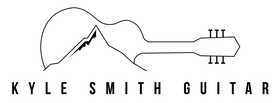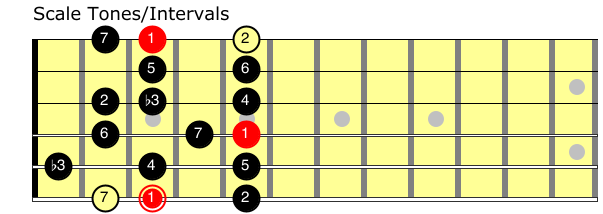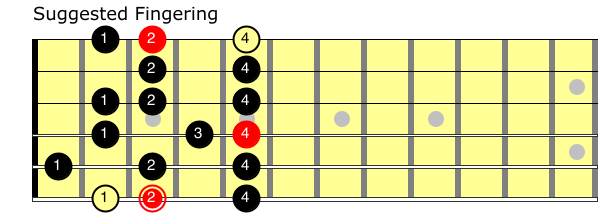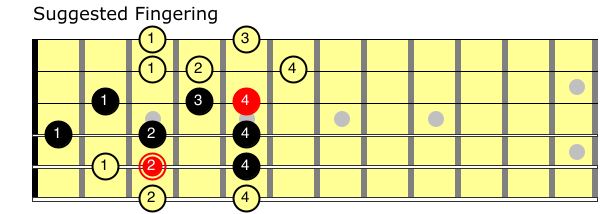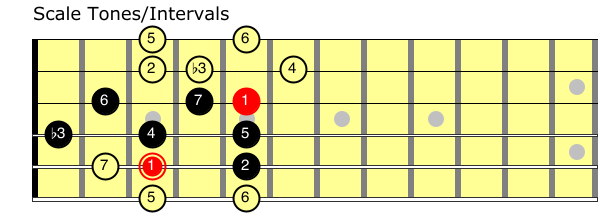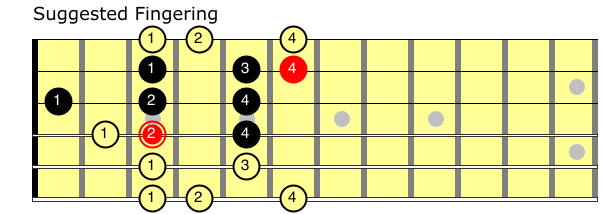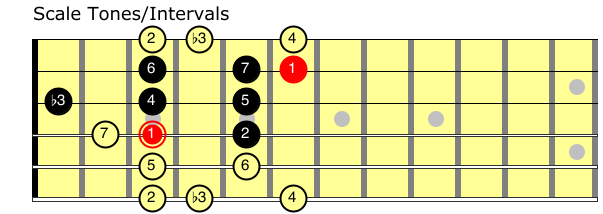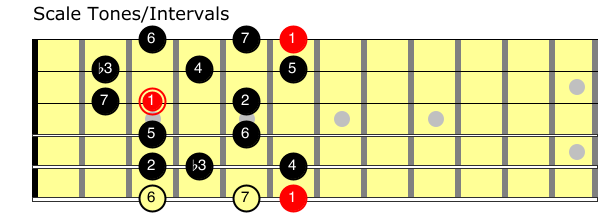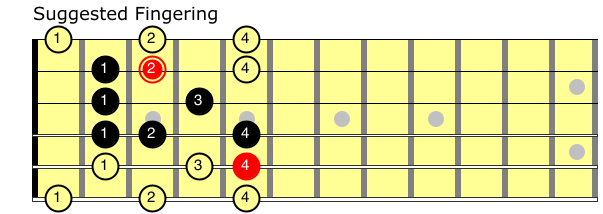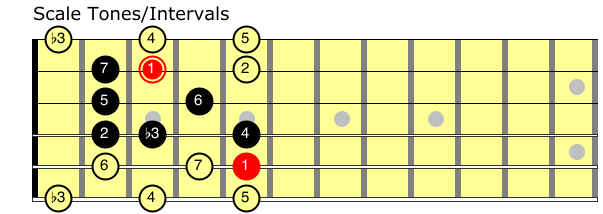 Melodic minor scales are an extremely helpful scale for jazz guitar, especially once you know how to use it for improvisation. Once ups learn these patterns, the melodic minor scale can be used as a kind of substitution to create different alterations when you are soloing over dominant 7th chords. This can be a relatively quick way for you to start creating more advanced sounds over chord progressions as you improvise. In order to use the melodic minor scale this way, it's important to get a good handle on how to play the scale shapes on your guitar. What should you know first? Before diving in to these jazz guitar scales, it is important for you to know your 5 major scale shapes for guitar. The melodic minor scale we will be using is based off of the finger pattern for your major scales. This way you can generate a new scale pattern by slightly altering a pattern you are already familiar with. It's also really helpful to know the note names all over the fretboard (but it's not a deal breaker if you don't know these, keep reading) - click here if you need to brush up on the notes on the neck. You can also use the fretboard map below as a reference if you want to get started right away. Learning Melodic Minor Scales For GuitarUsing melodic minor scales in jazz can give you an accessible way to start generating alterations and modern sounds in your improvisation. We'll focus on the mechanics of how to play these scale shapes in this lesson, and deal with different modes and uses of the melodic minor another time. It's important to work on the physical mechanics of the scale before you try to jump in and use it in your solos. If you can't play the scale shapes easily, it doesn't matter how much music theory you know. Take one scale pattern at a time, and work on getting it into your muscle memory. I like to play the scale and move up a fret, repeating until I've played the scale 10 - 12 times. It's a simple practice routine, and it works really well for developing your initial muscle memory with any scale shape. If you want to be really intense about it, you can work your way back down the neck, too. You can also work around the cycle of 4ths, shown below: C F Bb Eb Ab Db Gb B E A D G This is a good way to work on your note locations on each string, as well as getting the scale pattern under your fingers. What Is The Melodic Minor Scale?The melodic minor scale is made up of 7 notes. For our purposes, the melodic minor scale is only one note different than the major scale. The melodic minor scale is made up of a root (1), major second (2), minor third (b3), perfect fourth (4), perfect fifth (5), major sixth (6) and a major seventh (7). See the scale graphic below for an example: For classical music, the melodic minor scale changes as you come back down the scale (descending form). We're not going to worry about that for right now, because we are interested in this for jazz guitar playing. In jazz, we only use one version of the melodic minor scale, the Ascending form as shown above. 5 Melodic Minor Scale ShapesJust like your major scales, there are 5 different melodic minor scale shapes. If you already know your 5 major scale shapes, adjusting to your melodic minor scale will be easy. We are literally taking the 3rd interval of the major scale, and moving it down the neck one fret. This creates some "stretchy" finger patterns that I'm not usually a fan of. That being said, I find that this finger pattern lends itself well to thinking about this scale in terms of application to dominant 7th chords later on. Below you'll find 3 examples for each scale form: A suggested finger pattern, a TAB/Notation example, and a diagram showing the scale tones/intervals that make up the scale. Start by focusing on how to play the scale - get the mechanics of the pattern into your muscle memory. Once you are used to the finger pattern, try memorizing the scale tone sequence as you play. 6th String FormPractice Example5th String FormPractice Example4th String FormPractice Example3rd String FormPractice Example2nd String FormPractice ExampleThings To Think AboutThe most important thing to start with is getting the melodic minor scale patterns into your fingers, and into your ears. This means you need to develop the muscle memory to play the scale without too much thought, and get used to how the scale sounds as you play it. The melodic minor scale can be a useful tool for jazz improvisation, but only if you can play it easily. So getting used to the physical part of playing this scale is a critical first step. Practice one scale shape at a time, and move it up and down the neck so you get familiar with it everywhere on your guitar. Double check the beginning of this lesson for ideas on practicing these scale patterns. With practice, it will be easy to start using melodic minor scales in your jazz guitar solos. Keep practicing, and let me know how it goes! Related Lessons
0 Comments
Your comment will be posted after it is approved.
Leave a Reply. |
